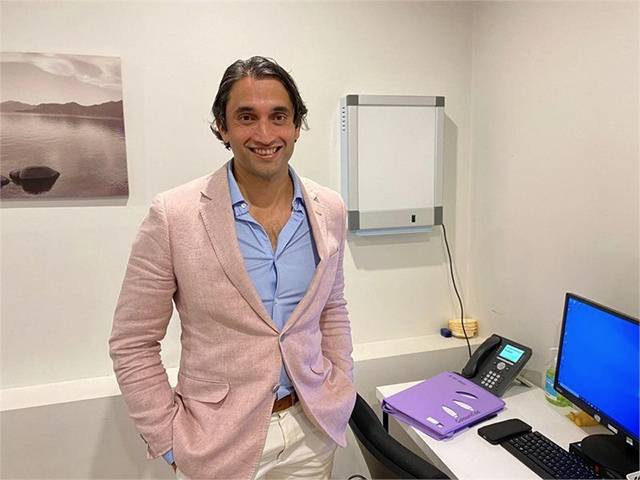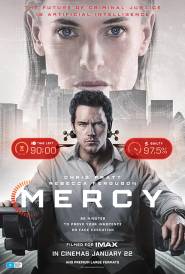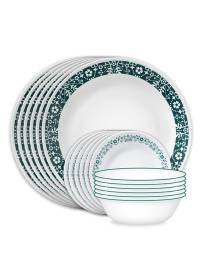Can a sports injury increase your risk of breast cancer?

Leading breast cancer surgeon busts sporting injury myth
Can a sports injury increase your risk of breast cancer?
If you had an active childhood spent playing sports afterschool or on the weekend you might have sustained the odd sports injury here and there in those rough and tumble days. Let's face it, netball can get a bit rough and elbows tend to go flying at the best of times. Sometimes our old injuries can come back to haunt us as we age.
Some people believe that sports injuries can lead to breast cancer, however, Associate Professor Sanjay Warrier assures everyone that this is not the case. There is no link between sports injuries and cancer, he clarified, however, an injury may draw attention to a previously formed lump, which is then how the cancer is detected.
Associate Professor Warrier is one of the world's leading breast health and breast cancer surgeons who has built a highly respected practice in Sydney. The practice spans three locations with its main surgical centre located at the Chris O'Brien Lifehouse in Camperdown, and the other sites at BMA House, Macquarie Street, Sydney and Bondi Junction Medical, Oxford Street, Bondi Junction.
In addition to Associate Professor Warrier's breast health and surgical work, he also dedicates considerable time to research exploring and developing advancements in breast cancer detection and treatments to improve outcomes for patients. He also developed the world's first Master of Breast Surgery which is delivered through the University of Sydney.
Injuries cannot cause cancer
"Injuries cannot cause cancer, but an injury may lead to finding cancer in the injured area. For example, a bone that is weak from a cancerous tumour is more likely to break. So, if an accident occurs during a sporting event and the bone breaks, then during the course of treatment for the injury, the cancer is discovered," Associate Professor Warrier explained.
"There is no data or indication that trauma of any kind to the breast is linked to breast cancer or can cause breast cancer. This is a myth that has circulated for many years without foundation."
Breast trauma causes lumps
"People are understandably concerned that breast injury/trauma can cause cancer because the trauma can cause lumps to develop. These lumps, however, are not cancerous. Let me explain further: there are two types of lumps that can develop from trauma. The first is called hematoma and this is a deep bruise that will heal. The other is fat necrosis, which is scarred fatty tissue in the breast that results from injury," Associate Professor Warrier said.
"If you have had some sports injury around the breast area, and you are concerned, the best thing to do is to book in for a mammogram. This will give you peace of mind about the risks."
So what does cause breast cancer?
"There are certain risk factors that you cannot change, for example getting older or having a family history of breast cancer or ovarian cancer. Other risk factors include previous treatment using radiation therapy, your reproductive history and genetic mutations," Associate Professor Warrier added.
Factors that can help you avoid breast cancer
"We must all try our best to keep physically active and to keep our weight in the healthy range. Your diet should contain a large variety of fruits and vegetables and lean protein. It's also advisable to limit your alcohol intake and not to smoke," Associate Professor Warrier said.
"Stress is also a big factor that places unnecessary pressure on our body. At a cellular level, it is important that we support our body with an active lifestyle, quality sleep and activities to reduce stress.
"When it comes to breastfeeding, research shows that the risk of breast cancer is reduced by 4.3 percent for every 12 months of breastfeeding, this is in addition to the seven percent decrease in risk observed for each birth. Breastfeeding reduces the risk of Triple‐Negative Breast Cancer by 20 percent and in carriers of BRCA1 mutations.
"I am often asked about the risks of oral contraception. Research studies provide consistent evidence that the risks of breast and cervical cancers are increased in women who use oral contraceptives, whereas the risks of endometrial, ovarian, and colorectal cancers are reduced. Having said this, the risks for breast and cervical cancers are extremely low and it is important to take into account other factors such as family history."
Screening for breast cancer
"A woman's risk of developing breast cancer increases with age. Over 75 percent of breast cancers fall into the 50 to 74 years age group. Regular breast screens are the best way to find cancer early. If you are in this age group, you can have a free mammogram every two years. If you're outside of this age range, it is still important to be vigilant, undertake self-examinations, undertake regular screening and speak to your doctor if you have any concerns or symptoms," Associate Professor Warrier advised.
Tips for self examinations
"I have formulated an easy system to help women undertake self-examinations at home and I call it 'LOOK, LIFT, FEEL," Associate Professor Warrier said.
"LOOK, LIFT, FEEL only takes a few minutes and should be done regularly. Look at your breasts in the mirror to identify any changes in shape, colour or texture. Then lay flat and lift your arm up over your head and with two fingers together, using the pads of each finger, place gentle pressure on the breast moving your fingers around in a circular motion. Change sides and repeat.
"Take your time and feel for any lumps or changes in the breast. Remember that your breasts may be dense and will naturally feel uneven. If you encounter any changes or unusual lumps, book an appointment with your doctor. The majority of issues are benign, but it is always important to check things with your doctor."
Further information about undertaking breast screening and detecting breast cancer can be found at https://www.drsanjaywarrier.com.au.
About Associate Professor Sanjay Warrier
Associate Professor Sanjay Warrier is a past President and current committee member of Breast Surgeons of Australia and New Zealand (BreastSurgANZ). His views are those of his own, not BreastSurgANZ. Associate Professor Warrier's surgery is located at the Chris O'Brien Lifehouse and he also has clinics at Oxford Street, Bondi Junction and Macquarie Street, Sydney. He is published in numerous peer-reviewed journals and won the Royal Prince Alfred Hospital's Patron's Prize for best scientific research.
MORE



